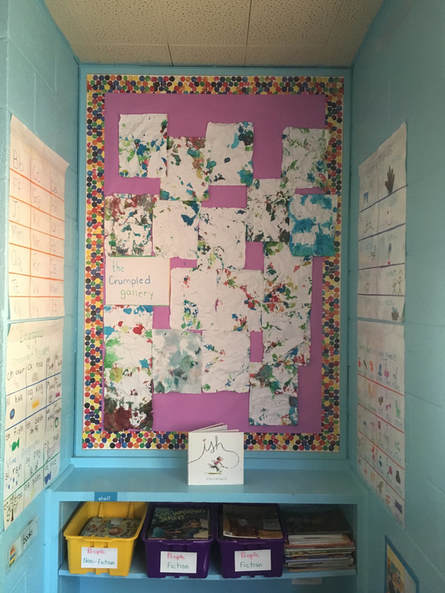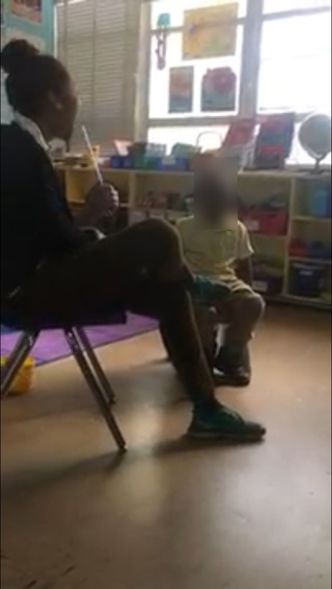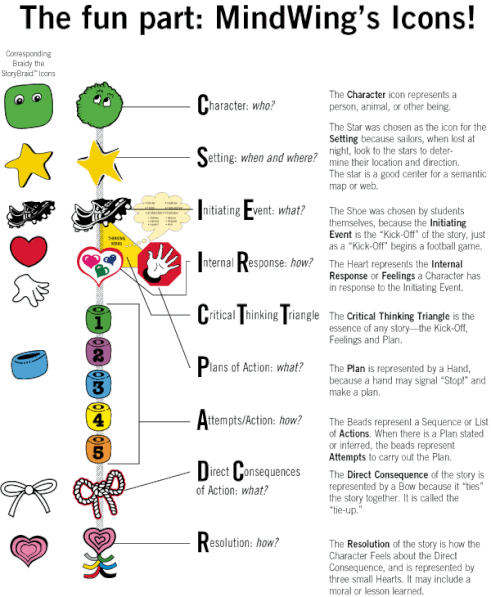- Home
- About Me
-
Teacher Growth
-
Assessment
>
- Assessment #1: Kindergarten Beginning of the Year Quick Assessment (BOY)
- Assessment #2: Easy CBM Middle of the Year (MOY) and End of the Year (EOY)
- Assessment #3: i-Ready End of the Year (EOY) Assessment
- Assessment #4: End of Unit Assessment/Domain Review Assessment
- Assessment #5: End of Week Assessment/Word Work Assessment
- Planning for Instruction >
- Instructional Strategies >
-
Assessment
>
-
Student Growth
The picture above is an image of my first grade classroom. On the bulletin board in the back next to the lamp is a self-portrait classroom collage, which students made following our reading of the storybook A Bad Case of Stripes by David Shannon. Meaningful reading is facilitating memorable reading experiences for students with extension activities, which bring each story to life in the classroom. Student artwork hung around the classroom creates a room full of beloved themes and characters and cultivates a love for reading.
Instructional Strategy #2: Meaningful Reading
1. Read-Aloud Arts Integration
Arts integration is an important component of learning to read for early childhood learners. The students are able to make concrete connections through created artwork and story time to make each story come to life. Integrating arts into the curriculum creates more meaningful and lasting learning experiences for each student overtime. At Wiley H. Bates Middle School, in Annapolis, Maryland, each teacher is "committed to weaving the arts and standard curricula together to create a richer more lasting learning experience for their students" (Nobori, 2012). Therefore, the intentional planned integration of arts following and during read-alouds facilitate meaningful and interactive learning experiences for each student. Specifically, in the classroom I have found that when arts activities are intentionally integrated to read-aloud experiences students remember the story and key details with more clarity and spirit.
Below are two arts integration activities, which were planned intentionally for classroom read-alouds. The art activity on the left is a visual arts activity and the art activity on the right is a performance art activity.
Below are two arts integration activities, which were planned intentionally for classroom read-alouds. The art activity on the left is a visual arts activity and the art activity on the right is a performance art activity.
|
This is an image of an arts integration activity that was completed following the reading of the story Ish by Peter H. Reynolds. The story was read with the purpose of encouraging students to paint, write, draw, etc. "ish-fully," not afraid to make mistakes. In the story, the main character's sister creates a crumpled gallery of her brother's artwork to encourage him as an artist. In our classroom, following the story students created their own crumpled gallery to encourage students as artists, writers, and readers, as well. Students created the crumpled art gallery by crumpling up white paper and painting "ish-fully" with water color paint, each student's finished product was hung in the crumpled gallery.
Below is an excerpt from a sample lesson plan for the book Ish by Peter H. Reynolds read-aloud arts integration. The specific arts-integration portion is highlighted in blue. |
This is an image of dramatic arts integrated into the reading of the story Wilma Unlimited by Kathleen Krull. In this image, I am interviewing the student as Wilma Rudolf and I am asking him questions about her success as a runner. This activity encourages the student to embody the main character and share key details to demonstrate understanding of the story. The activity is also interactive for the class or audience, who is able to ask the student or Wilma Rudolf questions about key details in the story.
Below is a sample lesson plan for the book Wilma Unlimited by Kathleen Krull read-aloud arts integration. The specific arts-integration portion is highlighted in blue. |
|
|
|
2. Braidy, the Story Braid
Braidy, the story braid was introduced to our class by our school's speech pathologist to increase students oral language skills, in addition to parallel classroom teaching about story elements. Our school's speech pathologist visited the classroom each Tuesday and used Braidy to introduce a story element and create conversation about that story element. The push-in services were intentionally planned as a proactive service and weekly resource to increase all students' overall language proficiency and ability to apply reading comprehension skills.
Braidy, the story braid Benefits (Mind Wing, concepts Inc. 2017):
Braidy, the story braid Benefits (Mind Wing, concepts Inc. 2017):
- Targets oral language proficiency in the areas of conversation and narrative development
- Engages young children in recounting personal narratives and stories
- Provides direct instruction in language-literacy continuum
- Expands language functions from self maintenance to logical reasoning
- Fosters the development of thought, intent, feeling and perspective
3. Students Reading with Other Students and Classroom Visitors
In my classroom, I facilitate many opportunities that encourage students to fall in love with reading and begin to see themselves as readers. Initially, students may see themselves in my teacher's assistant or myself as readers, but I encourage many community members and other students in the building to come into my classroom to read the class to demonstrate that we are all readers and present different identities for students to be affirmed by as readers themselves. It is also, my intention to create memories around read-aloud and reading shared with each classroom visitor that reads to the class.
4. Before Nap time Story: Storyline Online & Drop Everything and Read (Guided Reading Time)
The Drop Everything and Read time (D.E.A.R.) is inspired by a national strategy, which encourages early childhood stakeholders to at times to just drop everything and appreciate a good story. The assertion is that "reading whether on your own or cozied up on the couch with your kids, is so much more fun and rewarding than just about everything else" (Drop Everything And Read, 2013). Consequently, when incorporating instructional strategies I allow time to simply enjoy reading and create positive relationships with listening to stories.
|
This is a video of a before nap time story from Storyline Online, "Catching the Moon" read by Kevin Costner and Jillian Estell. Students enjoy the Storyline Online stories because the illustrations come to life, similar to animated cartoons as the different voices tell each story. The repetition of Storyline Online each day creates a memorable experience for students cultivating a culture of before nap time stories.
|
D.E.A.R and guided reading time is another time, which allows students to cultivate a positive relationship with reading with peers and adults in our classroom community. During this activity, I encourage students to read on-grade level readers to increase students' reading stamina and fluency.
|



